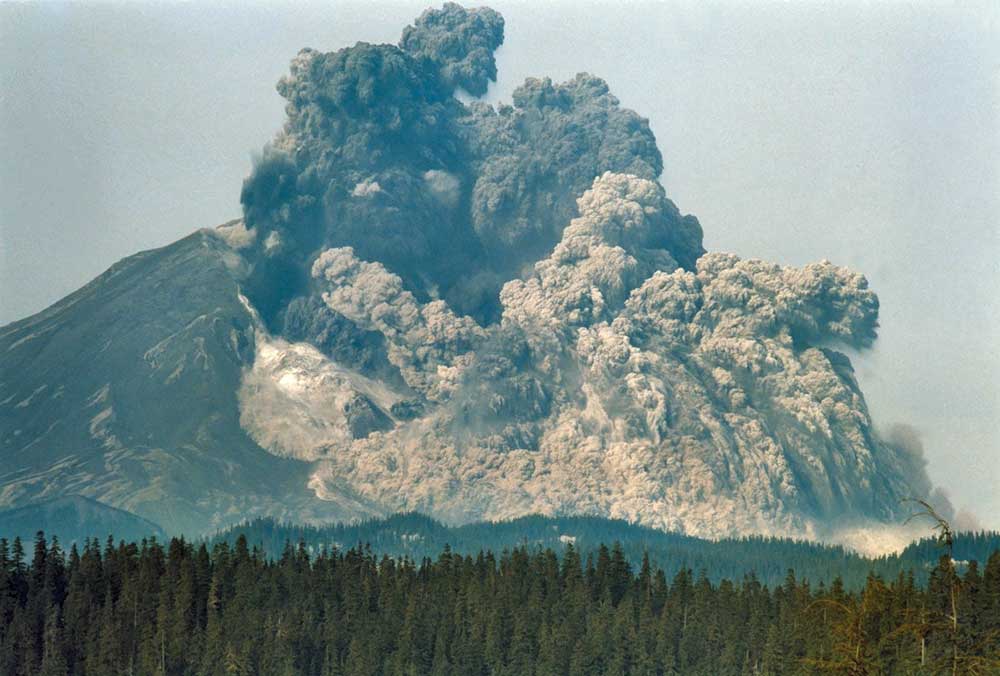35 years since the mountain woke up
It was at this exact moment, 35 years ago, that the deadliest and most economically-destructive volcanic event in the history of the United States occurred just 60 miles from where I now live. Fifty-seven people were killed. 250 homes were wiped out. 47 bridges, 15 miles of railways and 185 miles of highway…gone. An earthquake measuring 5.1 on the Richter scale triggered an eruption and caused a massive debris avalanche that reduced the elevation of the mountain’s summit from 9,677 feet to 8,365 ft.
1,302 vertical feet of earth rocketed into the valley below – at nearly 300 miles per hour – leaving behind a 1 mile wide smoking crater.
I was nearly five and living in Bothell, just over 130 miles north of Mount St. Helens, but the explosion was so loud it shook our house and woke up my dad. I was watching cartoons when he came into the living room to ask me what that was. I told him I thought it was a sonic boom, the kind fighter jets make when they exceed the sound barrier. Later that morning he confirmed it was, in fact, one of the most beautiful and pristine landscapes in all of Washington State being suddenly and violently decimated.
Since that day, I’ve always had a close connection with Mount St. Helens. I’ve always felt like it was a part of me and would take interest whenever a documentary was on television or undiscovered photos would surface and make the news. Perhaps all of us have a connection like that, to a particular landmark, event or occurrence from our childhood. Something that invokes a personal feeling, bringing us back – ever so slightly – to that time and place once again.
Over the years, I’ve written a few times about Mount St. Helens. You can read more details of my memories that day as they were printed in the Vancouver Columbian five years ago on the 30th anniversary. And in 2012, I was able to climb to the top of the mountain on a trip with my dad. You can read all about that in my four-part series:
- Ascending St. Helens, Part 1: Gaining in elevation
- Ascending St. Helens, Part 2: Rock-hopping at the jetty
- Ascending St. Helens, Part 3: More than a mountain
- Ascending St. Helens, Part 4: The gear that got me there
After 35 years, the vegetation has finally returned and wildlife sightings are becoming more and more frequent. It will take centuries to rebuild what once was, but – barring another massive eruption from the sleeping giant – the time will come when Washington residents and their children can barely find any visible evidence of what happened that morning in 1980.
Until then, I encourage everyone to get to St. Helens and learn more about it. Some great places to start are the Mount St. Helens Visitor Center, the Johnston Ridge Observatory, The Mount St. Helens Science and Learning Center, and the Pine Creek Visitor Center.

